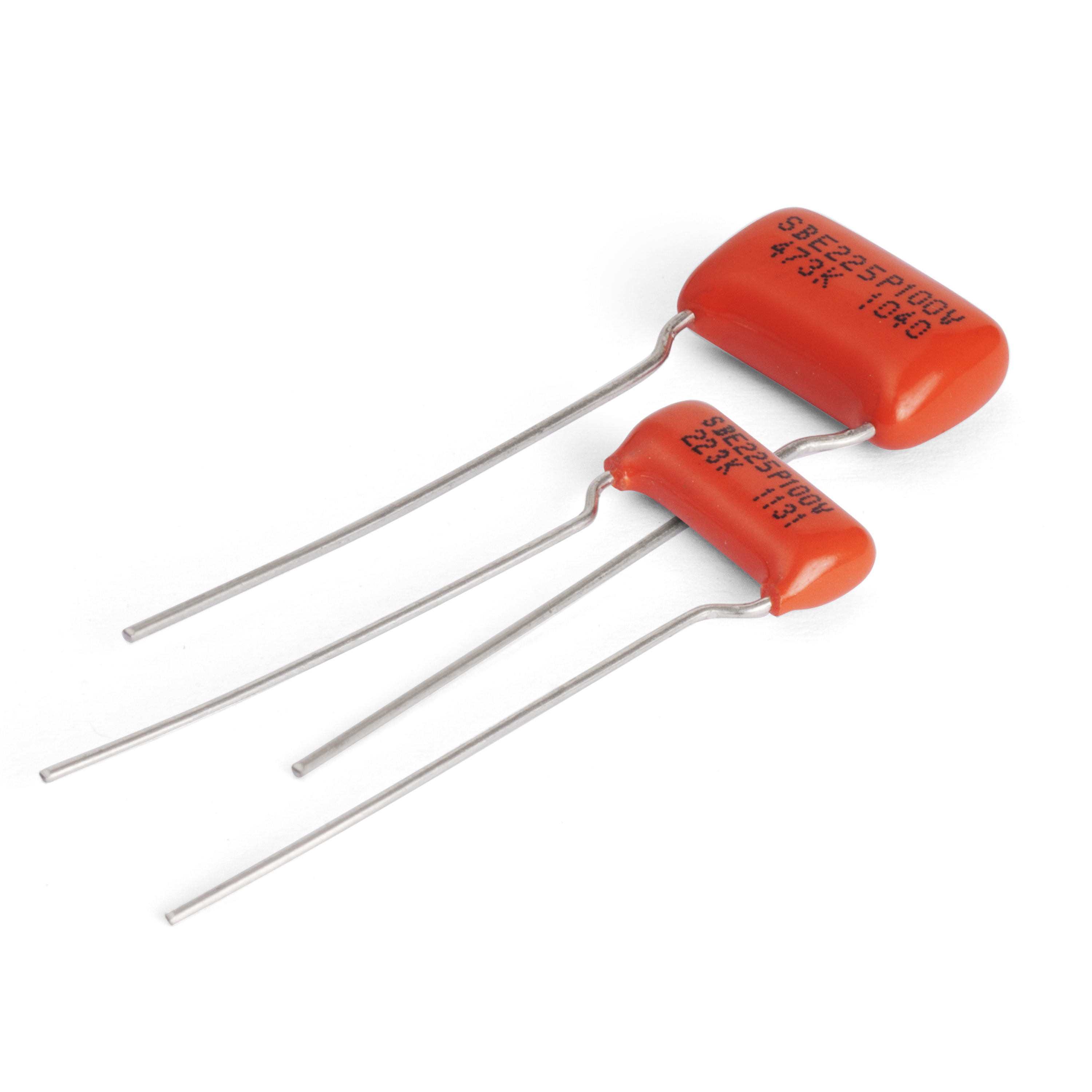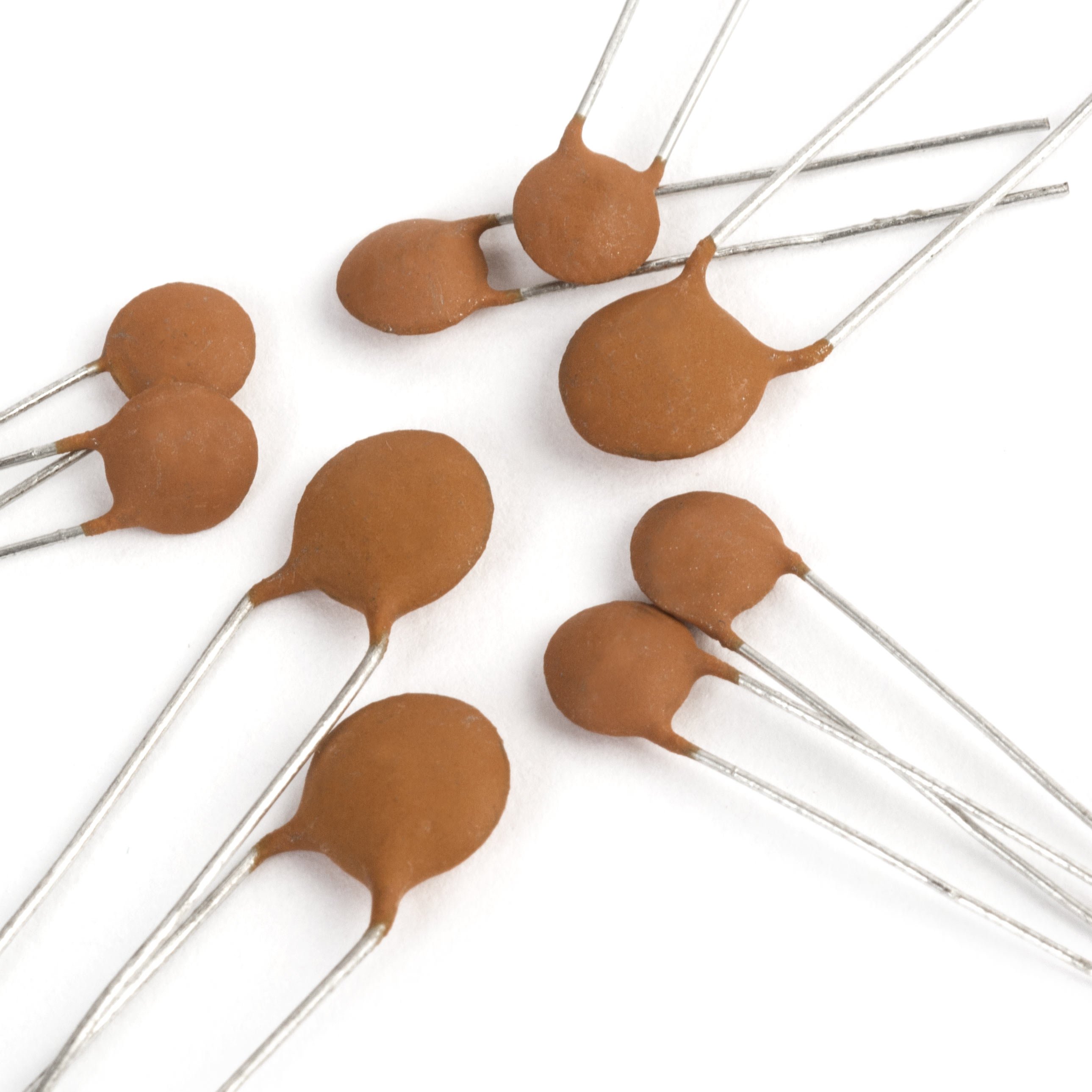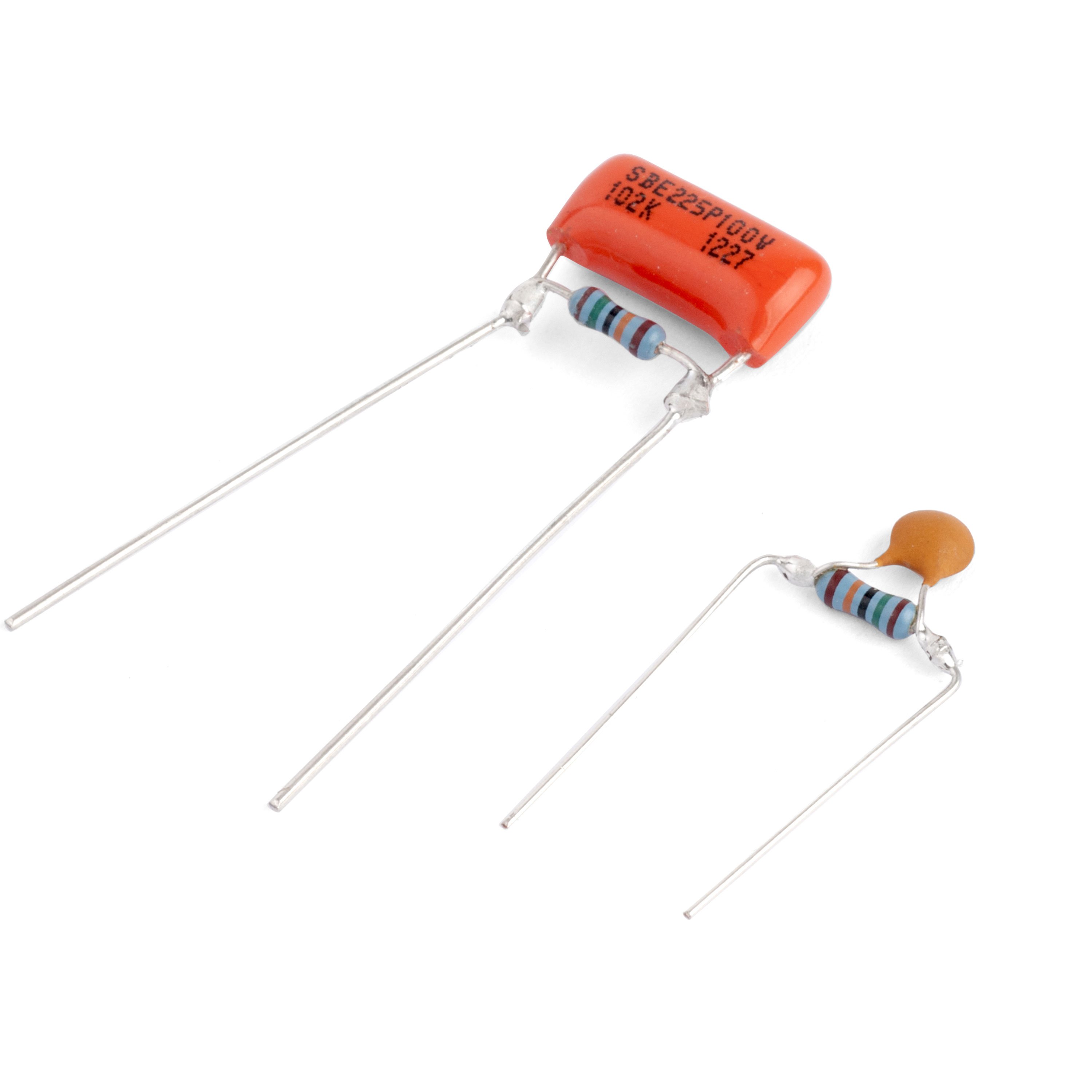Understanding Guitar Wiring, Part 4: What is a capacitor and how does it work?
What is a capacitor and how does it work?
Capacitors, or "caps," are simple electronic components that are typically used in guitar electronics as filters or barriers for certain frequencies. High frequencies will pass through a cap, while lower frequencies are blocked. The value of the capacitor will determine the frequencies that pass (refer to Diagram #7). Using the filtering properties of a cap, we can affect the tone of the guitar.
Higher frequencies travel more readily to ground, and a guitar can sound muddy as the volume is rolled off. Many builders overcome this problem by using a "treble bypass" capacitor between the input and the output of the potentiometer. The most common treble bypass caps are 680 picofarads (pf) and .001 microfarads (µf). The higher the value of the cap, the more upper frequencies are allowed to travel through it. A tone pot uses the same properties of a cap, but instead of letting the frequencies slip by to the amp, they are sent to ground. Most tone control caps are of a higher value than treble bleed caps, so the overall effect will be more noticeable, with more tonal flexibility.
How is a tone pot is wired?
There are several ways to wire a traditional tone control, yet they all end up working the same way. Diagram #8 shows the most common method.
More in This Series
Part One: How a magnetic pickup works
Part Two: What is a potentiometer and how does it work?
Part Three: How is a volume pot wired?
Part Four: What is a capacitor and how does it work?
Part Five: Selector Switches
Part Six: Mini toggle switch basics and push-pull pot basics
Part Seven: Output Jacks
Part Eight: Grounding and Shielding
Part Nine: Understanding impedance and impedance matching
Part Ten: Wiring Glossary
Part Eleven: Sample Diagrams


